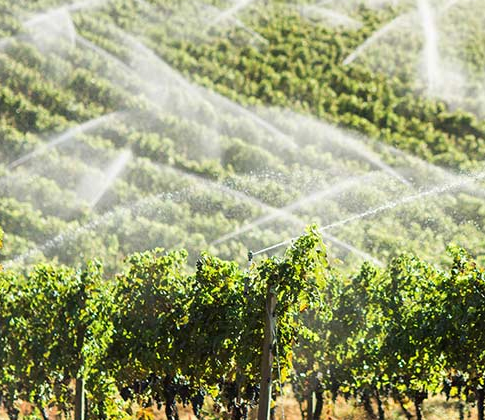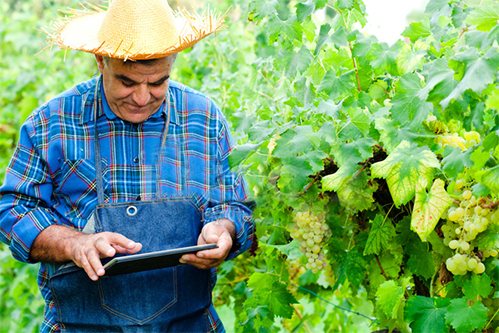Irrigation in viticulture is the process of applying extra water in the cultivation of grapevines.

Irrigation of grape vine vines is a solution to stabilize production in qualitative and quantitative terms and to satisfy market demand. It must be considered as a technique of improvement or qualitative maintenance, as well as to use the minimum amount of water for an optimal efficiency.

It is considered both controversial and essential to wine production. In the physiology of the graptevine, the amount of available water affects photosynthesis and hence growth, as well as the development of grape berries. While climate and humidity play important roles, a typical grape vine needs 25-35 inches (635-890 millimeters) of water for its survival.
A vine that does not receive the necessary amount of water will have its growth altered in a number of ways; some effects of water stress (particularly, smaller berry size and somewhat higher sugar content) are considered desirable by wine grape growers; however, the limit between a little water stress and an irrevesible plant death is very close.

Why irrigate vineyards?
During the past decades, significant changes took place in the world wine market, especially to do with its production. Wine production reaches higher levels of quality and production consistency and the effects of global warming on terroir become increasingly severe. Most viniculturists are re-examining traditional growing methods.
In order to secure long-term investment in terroir branding, to ensure stable and steady vintage quality, and ultimately compete in the mid-to-high-level global wine market – more and more “Old World” growers are turning to modern irrigation methods.
The need for modern irrigation methods in traditional “Old World” growing areas is driven by both climatic and market imperatives. Progressive viniculturists are turning to advanced irrigation to assist them in continuing to consistently produce fine wine.

Restricted Deficit Irrigation (RDI) approach
Controlling irrigation application often involves supplying less water than required for optimal vine development. Known as Restricted Deficit Irrigation (RDI), this practice is designed to keep the vine under super controlled water stress conditions to increase wine grape quality. RDI allows grape growers to control the following elements:
- Berry size
- Vegetation and light regime
- Sugar concentration
- Availability of assimilates, photosynthesis
- Turgor, solids concentration
Effective application of a RDI approach is contingent upon stringent and accurate irrigation control, possible only through the use of advanced irrigation techniques like drip irrigation and accurate water supply.

The STREGA LoRa wireless smart valve can play an important role in this RDI approach by multiplying the number of irrigation zones without retrenching the whole vineyard for laying new cables.
STREGA Time-controlled emitter for irrigation valve helps vineyard owners to simplify and accelerate their installation costs by avoiding the use of dedicated wires to control the valves from the control room.
And because the LoRaWAN technology permits to access extreme distances, one gateway is usually more than enough to control each zone through the entire vineyard!

